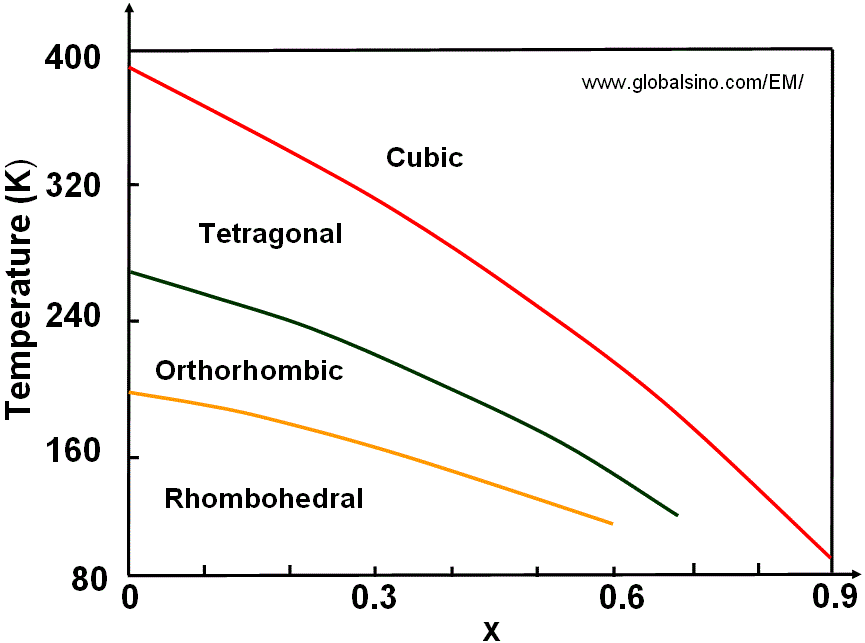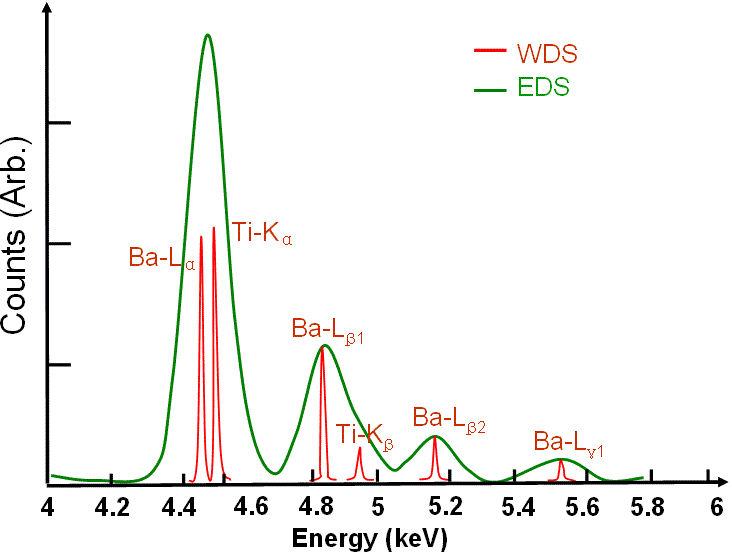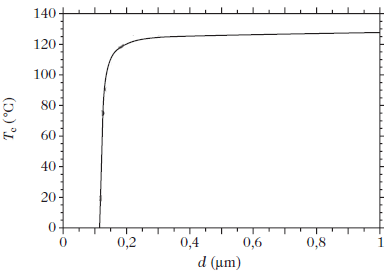=================================================================================
BaTiO3 (barium titanate) was one of the first commercially viable ferroelectric materials [6]. Because of this, it has also been one of the most comprehensively studied ferroelectrics with a simple and well-known structure. [7]
In Table 2312a, the fundamental part of the cubic BaTiO3 lattice cell for ferroelectric and piezoelectric properties is represented by the TiO6 octahedron, with Ti4+ ion in the center. The lattice stability is ensured by the Ba2+ ions at the corners of the unit cell.
Table 2312a. Properties of BaTiO3.
|
Perovskite/Cubic |
Orthorhombic |
Rhombohedral |
Perovskite/Tetragonal |
Body-centered tetragonal |
Hexagonal |
Lattice parameters (Å) |
a = 3.988 |
a = 3.99, b = 5.669, and c = 5.682 |
|
a = 3.9998 and c = 4.018 |
|
|
Space group |
Pm-3m (221) |
Amm2 (38) |
R3m (160) |
P4mm (99) |
I4/mcm (140) |
P63/mmc (194) |
Positions |
Ba (1a): (0, 0, 0), Ti (1b): (1/2, 1/2, 1/2), O (3c): (1/2, 1/2, 0) |
Ba (2a): (0, 0, 0), Ti (2b): (1/2, 0, 0.51), O1 (2a): (0, 0, 0.49), and O2 (4c): (1/2, 0.253, 0.237) |
Ba(1a): (0, 0, 0), Ti(1a): (1/2+xTi, 1/2+xTi, 1/2+xTi), O(3b): (1/2+xO, 1/2+xO, zO) |
Ba (1a): (0, 0, 0), Ti (1b): (1/2, 1/2, 1/2+zTi), O1 (1b): (1/2, 1/2, zbO), O2 (2c): (1/2, 0, 1/2+zcO) |
Ti(2c): (0, 0, 0), Sr(2b): (0, 0.5, 0.25), O(2a): (0, 0, 0.25), O(4h): (−u+0.5, u, 0) |
|
Temperature |
> 393 K |
275 K > T > 185 K |
< 185 K |
Room temperature |
|
|
Bulk modulus B (GPa) |
185 |
|
|
|
|
|
Cohesive energy (eV) |
29.9 |
|
|
|
|
|
Band gap (eV) |
3.7 |
|
|
|
|
|
Ferroelectric polarization (μC/cm2) |
|
~20 |
~20 |
~20 |
|
|
|
Ferroelectric |
Ferroelectric |
Ferroelectric |
Ferroelectric |
|
|
Polar axis of ferroelectric phases |
[001] |
[011] |
[111] |
|
|
|
|
Tsuda et al. [8] suggested that the phase transformations in BaTiO3 ferroelectric crystals have an order-disorder character, namely only the rhombohedral phase has an ordered structure but the orthorhombic and tetragonal phases have disordered structures. Moreover, Tsuda et al. [10] were able to observe the two-dimensional (2D) distribution of the small atomic displacements (~10 pm) cased by the ferroelectric polarization in the rhombohedral phase of the tetragonal BaTiO3 nanostructures using the CBED method in STEM mode. However, Shibata et al. [9] observed the polarizations in BaTiO3 tetragonal phase using atomic resolution differential phase-contrast (DPC) imaging based on the aberration-corrected STEM.
The transition temperatures of BaTiO3 are given by,
BaTiO3 has three ferroelectric phases and three Curie temperatures as shown in Table 2312b.
Table 2312b. Characteristics of BaTiO3.
Figure 2312a shows the temperature-composition phase diagram of (Ba1-xSrx)TiO3.

Figure 2312a. Temperature-composition phase diagram of (Ba1-xSrx)TiO3.
In EELS, perovskite type ferroelectric and high-k dielectric materials, such as BaTiO3 and SrTiO3, normally show only one interband plasmon peak [1–4].
The EDS profile of BaTiO3 system shown in Figure 2312b presents an example of EDS peak overlap. However, the FWHM of the WDS peaks is only a few eV because the energy resolution of the wavelength spectrometer is 5-10 eV. In this case, peak overlap in WDS is not a problem.

Figure 2312b. EDS and WDS profiles of BaTiO3. The green spectrum presents a standard EDS of of BaTiO3, while the red one presents a standard WDS.
EDS shows the overlapped Ba Lα-Ti Kα and Ba Lβ1-Ti Kβ peaks.
Figure 2312c shows an example of Curie temperature Tc as a function of the grain size. Here, Tc represents the temperature of the tetragonal–cubic phase transition.

Figure 2312c. Theoretical Tc in BaTiO3 as a function of the grain size.
Adapted from [5]
[1] K.S. Katti, M. Qian, F. Dogan, M. Sarikaya, J. Am. Ceram. Soc. 85 (2002)
2236–2243.
[2] K. van Benthem, C. Elsasser, R.H. French, J. Appl. Phys. 90 (2001) 6156–6164.
[3] S. Schamm, G. Zanchi, Ultramicroscopy 88 (2001) 211–217.
[4] J. Zhang, A. Visinoiu, F. Heyroth, F. Syrowatka, M. Alexe, D. Hesse, H.S. Leipner,
Phys. Rev. B 71 (2005) 064108.
[5] P. Perriat, J.C. Niepce, G. Caboche: J. Thermal Anal. 41, 635–649 (1994).
[6] B. Jaffe, Piezoelectric ceramics, (Academic Press, London, 1971).
[7] G. H. Haertling, Journal of the American Ceramic Society, 82, 4 (1999).
[8] K. Tsuda, R. Sano, and M. Tanaka, Phys. Rev. B 86, 214106 (2012).
[9] N. Shibata, S. D. Findlay, Y. Kohno, H. Sawada, Y. Kondo, and Y. Ikuhara, Nat. Phys. 8, 611–615 (2012).
[10] Kenji Tsuda, Akira Yasuhara, and Michiyoshi Tanaka, Two-dimensional mapping of polarizations of rhombohedral nanostructures in the tetragonal phase of BaTiO3 by the combined use of the scanning transmission electron microscopy and convergent-beam electron diffraction methods, Applied Physics Letters, 103, 082908 (2013).
|

